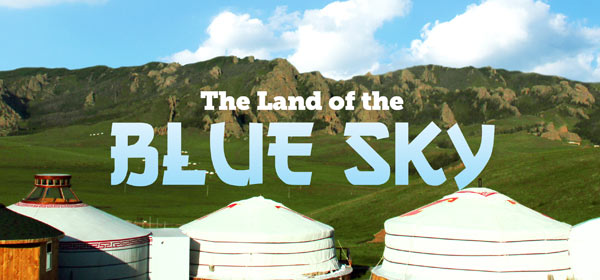
Auf Wiedersehen Ocala
My tale first unfolds with me being driven to Orlando International Airport, flying to Detroit and then, 16 hours later, landing in Beijing where the weather is hot and muggy just like Ocala’s—with one critical difference. The extreme air pollution looks like fog and hangs thick and heavy in the skies. I was last in Beijing in October 1995 and gaze with wonder at the new, massive skyscrapers the Chinese government has since erected.
I venture out on the streets and see skeletal men picking for scraps of food in garbage cans. Rickshaws very nearly run me over. The swarm of honking automobiles clogs every conceivable inch of the streets. While in Beijing, I visit The Forbidden City, tour the Temple of Heaven and stop at the Summer Palace. Everything is just as I remember it except for the millions of Chinese summertime visitors. The Great Wall of China has not moved since my last visit, so I decide to pass up a tour of this monolithic structure.
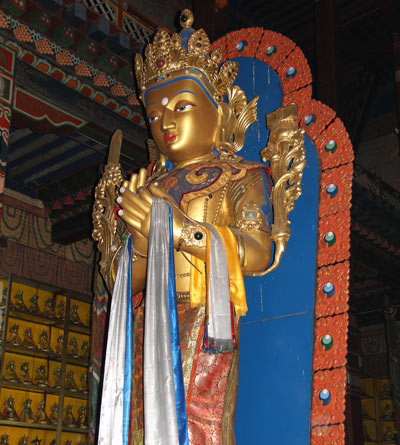
Arrive Ulaanbaatar, Mongolia
After a fast flight, I arrive in Ulaanbaatar, or UB as it is universally known. UB is the Mongolian capital and sits on the banks of the Tuul River engulfed by mountains. UB is a bustling metropolis of almost a million people where nomads on horseback fight for space on the roads with cars in the chaotic traffic. I can’t call the roads actual streets because they are more like an interconnection of huge potholes. I am astounded by the dirt and filth. The city grime permeates my skin. The first order of business is sudsing up in a hot shower in the five-star Kempinski Hotel Khan Palace.
I am sojourning in Mongolia with Overseas Adventure Travel with whom I have taken numerous trips to far-flung corners of the globe. This Mongolian trip would prove one of my most memorable. Including myself, there are 15 people in my travel group. Within our small group, a sense of camaraderie is established from the first hello to the last good-bye.
Our time in UB is spent visiting notable sites. I do not get the sense that UB is on most touristy destination maps. As Americans, we largely have the city to ourselves commingling with the locals. Arriving at the Ugandan Monastery, we tour Mongolia’s largest and most important center of Buddhism. Among the throng of visitors are worshippers bowing before an enormous Buddha and twirling prayer wheels.
After a nondescript lunch, we stop at the Zanabazar Museum of Fine Arts, which is home to a collection of Mongolian art through the early 20th century. Zanabazar was a 17th century artist and Mongolia’s first spiritual head of Tibetan Buddhism. I marvel at the colorful facemasks. Afterward, the group laboriously ascends the 200 steps to the top of Asian Hill that overlooks a rather modern, communist-era building.
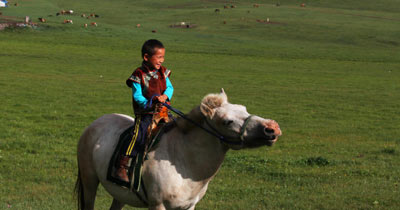
Gorkhi-Terelj National Park
Since the days of Genghis Khan, Mongolia has existed as a mythic land of ancient times. The people are deeply spiritual, and nomadic cultures are prevalent. Heavenly landscapes of snowcapped mountains, crystalline lakes, acres of grassy plains and ancient desert await visitors. Just be advised that this isn’t Paris, London or even Washington, D.C., which are thoughts that pass through my mind more than once as I fly on a Fokker 50 prop plane. Upon landing, we find that we are roughing it in gers, which are traditional felt tents. We stay in a Guru Camp for three nights. If you like camping, then you will like this excursion.
I was shown to my private ger, which is a large circular room, and mine has an unusually rare feature—a private bathroom attached by a very low-ceiling hallway. There is a super modern glass shower, steaming hot water and a vanity mirror that was made for people no more than 5 feet tall. Because I am over 6 feet tall, this makes shaving a challenge. I had read that the nomads used dried dung to heat the gers and am vastly relieved to find a stack of extra firewood to burn in the stove located in the center of the tent.
As an American, both small and large differences register in my mind. In America, we cherish animals as beloved pets. Here in Mongolia animals are everything but pets. They are used for food—including horsemeat—for transportation and for survival. A pitiful dog is tied to a stake near my tent. He barks and barks at me. I want to go over and feed and pet it, but one woman does and is rewarded with a sharp bite when she turns her back. The dog is used to guard our camp.
We are very far north and even in the summer the weather is chilling. One afternoon we drive to a nomadic horse family. They raise horses for their meat and have at least two hundred head of horses. We watch a demonstration of the nomads milking the mares for the milk that they will later ferment and sell. Sitting in the nomad’s ger, we ask a slew of questions about their daily lives. Just inside the ger is a large leather bladder of mare’s milk fermenting. I am offered a big bowl of fermented mare’s milk of which I take three sips. Fermented mare’s milk is slightly sour, effervescent and of acrid flavor containing alcohol. The milk is not only bitter to the taste but certainly not pasteurized like our American dairy products. Our guide laps up several bowls of the milk.
One family that was wealthier than others was a nomadic dairy family. In their ger, they not only have color television where the children watch cartoons but also telephone service, a small refrigerator and Internet access. I wish I could wirelessly plug my tablet computer into their Internet service and reconnect with my friends and family back in Ocala. Homesickness is like that. The people do not speak English and our guide translates. A cow comes to the door and takes a look inside. Next, a fat rat scampers across the door. That night’s dinner is mutton, noodles and a candy bar. I prepare for the return trip to UB.
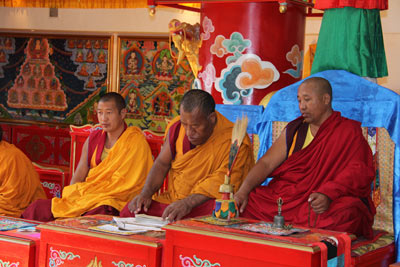
Chanting Lamas
We arrive at the Drepung Gomang College and meet with the abbot who was personally appointed by the Dalai Lama and the highest-ranking Buddhist in Mongolia. We are shown into his private office where a translator monk speaks to the abbot in Tibetan, then another monk translates to Mongolian and finally our guide translates into English. We proceed to ask questions for the next hour in this manner, and the abbot is both fascinating and kind. He exudes a sense of peace. The abbot instructs us to not accept so many worldly things that will interfere with our karma in the next life. He speaks of fleeing from Tibet and crossing the Himalayas to escape the Chinese.
After partaking in a 20-minute group meditation, we are taken to an interior room where the lamas’ chants fill the air. The abbot gives me permission to take video and photographs. The chanting continues with men in tall hats striking gongs. It is a unique experience.
Next, crawling down the linked potholes through traffic at 15 miles per hour, we arrive once again in UB. We have lunch at a restaurant that looks like the Mongolian version of Cinderella’s castle at Disney World. They charge the same price for a Coca-Cola as they do for a beer, and for each extra roll of bread, there is a surcharge. The only way to describe this place is “tourist trap,” but the Western-style bathrooms are modern and spotless. I try to shop but end up with only a few shirts for myself before returning to the Kempinski Hotel Khan Palace in UB. Exhausted, I order room service before collapsing onto a soft mattress.
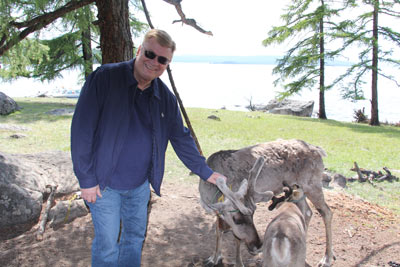
The Reindeer Family
The next day, we leave for the airport at 9:30am for an 11am flight that does not actually depart until 1:30pm. Many things run late in Mongolia, and time schedules are often meaningless. There is rain, as the weather changes constantly. We continue onward to our ger camps located at Khovsgol Lake. This is a mythical landscape of evergreen forests, flowering meadows where yaks graze, steepled mountains and pristine lakes and streams.
Continuing the next day, we take a speedboat for two hours up the lake finally coming into contact with a reindeer family. They have over 100 horses and 200 reindeer. I am offered a bowl of reindeer milk. It is a thick liquid with a plain but distinctive taste. Reindeer milk is very mild and creamy, and the cheese melts easily in the mouth. I give their 4-year-old boy a laser flashlight that he finds tantalizing. We then continue in the speedboats to the cliffs where we climb to the top to the see the Buddhist monument. At the top, there is a beautiful view of the lake. Upon returning to camp, I am given a two-story wooden house instead of the ger tent and immediately shower and nap before dinner.
The next morning at 5:00am (5:00pm Ocala), I am awakened by the women starting the fire downstairs in the living room. It is cold now, as we are over 4,500 feet above sea level. This day, we continue over rutted dirt roads in 4×4 all-terrain vehicles to visit a family of Tsaatans who live in traditional nomadic teepees and survive almost entirely on their reindeer herds. For generations, the Tsaatans have herded their reindeer high in the mountains and through ancient forests. It is a testament to their resolved strength as a people that the Tsaatans have learned to survive in this harsh environment of the taiga.
As the grandmother is working over a wooden stove making cheese in a wok, we have another round table discussion in the tent. At one point, the grandmother lights up a cigarette made of Russian tobacco rolled with newspaper. It only took four whiffs of the noxious fumes before I was outside the tent gasping for fresh air. We then say our good-byes and return to our camp on the lake.
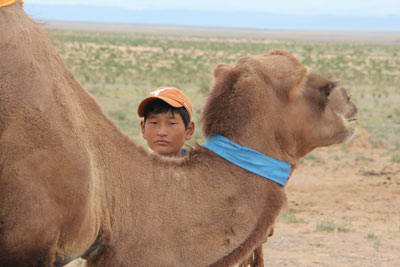
The Gobi Desert
Although only 5 percent of the Gobi Desert is sand, there is much to explore, such as Vulture Valley where I ride a horse next to a stream through the canyons. The Gurvan Saikhan Mountains, deep gorges and the Flaming Cliffs, so named by American paleontologist Roy Chapman Andrews in the 1920s near where he found the first nest of dinosaur eggs and other fossils, are stunning.
In the Gobi Desert at Moltsog Els, there are sand dunes. After a terrific lunch, we visit with a nomadic family engaged in the breeding of Bactrain camels, which have two humps. The mother offers us camel’s milk. I find it delicious, creamy and rich. This is followed by a cheese curd that has a bitter taste.
Finally, we mount our camels for a ride through the desert. I have ridden camels before near the pyramids in Egypt but none as comfortable as these two-humped camels. Lumbering along on my camel, it is an easy and comfortable ride though rather exotic.
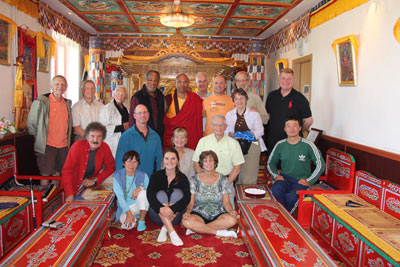
Back Home
My adventure is quickly coming to an end, and during my last night in my ger with the nomads of Mongolia, I reflect. My home in Ocala is exactly 12 time zones away on the other side of the Earth. What a privileged and exceptional life we Americans so nonchalantly take for granted. I think of the kindness of the Mongolian people and their generosity in offering all they had to share. I will never forget the luxury of living among these gentle people.
I wish I could linger longer under the spell of the nomadic Mongolian people, but I am bound the next day for UB, then shopping in Beijing and finally home to Ocala. I am rather wistful and yet feel rejuvenated. I know I shall never return but look forward to regaling my friends and family with a new repertoire of Mongolian anecdotes.
There is a sadness that shadows my soul as well during my last night among the nomads. They have lived this way for centuries,largely untouched by civilization. But the world is fast encroaching upon them. Even now, many of their children are being sent away from the nomad camps into government-run schools. I wonder if the next generation of Americans visiting Mongolia will only find a trap of tourist remnants and fragments of what was once the authentic nomadic Mongolian lifestyle.
As I lay my head down, I wonder where life’s trajectory will take me next. I am an enthusiastic globetrotter. I remember a quote form Henry David Thoreau that I read long ago: “When it is time to die, let us not discover that we have never lived.”
Interested In Your Own Adventure?
For additional information, contact Overseas Adventure Travel at (800) 959-0405 or OATtravel.com.






